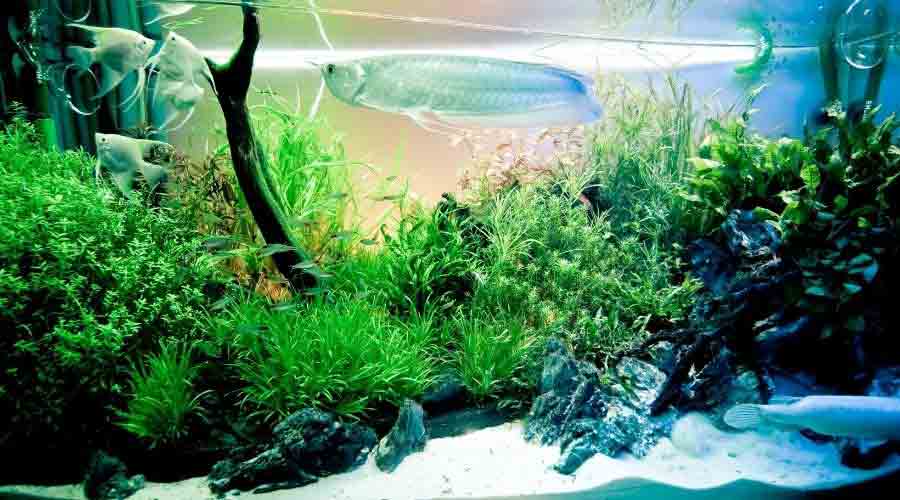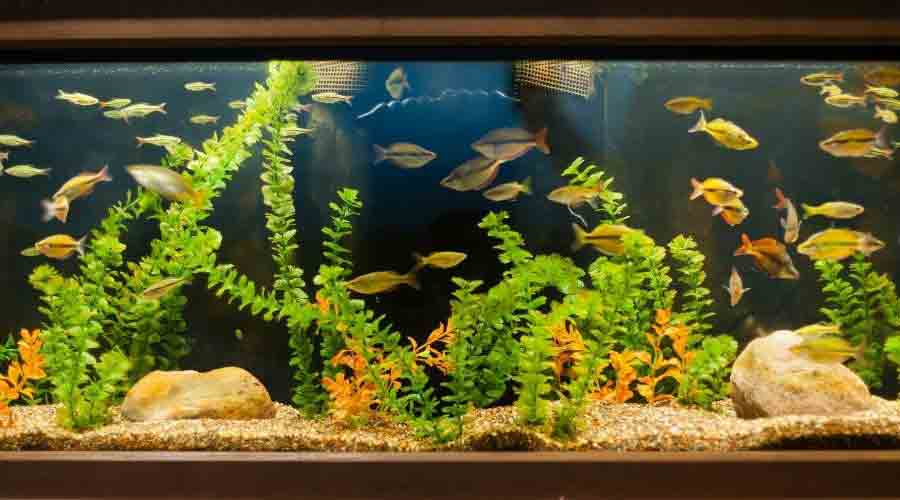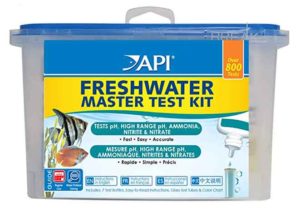Cycling a fish tank is one of the most critical steps in getting your tank ready to add fish. It’s a step you can’t skip, or you can kill your fish. Depending on how it’s done and the aquarium’s size, tanks can take a couple of weeks to many weeks to properly cycle. However, in this blog, I’ll give you tips on how to cycle your tank faster.
How to Cycle Your Tank Faster: Borrow Some Bacteria
So why cycle your tank anyway?
Well, if you are reading this blog, then you probably already know that cycling a fish tank helps set up a natural biofilter. This is something that is necessary in order to break down nitrites into nitrates and neutralize toxins.
Basically, you cycle a tank so that your fish can live in a healthy aquarium. The biofilter established from cycling a tank, along with regular water changes, keeps your tank healthy and your fish happy. That’s the non-scientific explanation.
Cycling a fish tank helps generate beneficial bacteria in the tank. And, these bacteria are key to neutralizing toxins that come from fish and crayfish poop (man my blue crayfish is a dirty little dude). Without cycling your tank properly, your fish might just kill over.
Now, with that said, if you already have another fish tank, it can really help you jump-start a new tank. But if you don’t, there are still options.
Let’s take a look.

What You Need to do to Cycle Your Tank Faster
Now, some of my friends have tried jump-starting the cycling in their tank by adding water from an already cycled fish tank. Well, that may help a little bit, but that’s not really what you are after. What you are after is the bacteria that live on and in the water filter, in the aquarium’s gravel, and in the porous ornaments within a cycled fish tank. These are the bacteria that can give you a leg up on cycling a tank faster.
Step 1 – Setting up the New Tank
Before you get started with adding bacteria to your tank from somewhere else, you will want to set up your new fish tank just like you would normally. You’ll want to add in the gravel, install the heater, the filter, and even your ornaments. You’ll then want to add in conditioned water.
But stop, here, don’t add your freshwater fish just yet. You probably already know this. But for those who don’t, hold up with those fish.
Now, you’ll want to let your tank run for roughly a day so in order for the water to settle and allow for the tank to stabilize with a temperature between 75 and 80 degrees. This is the temperature range that will not only support your fish but will also support the beneficial bacteria you’ll be adding.
Step 2 – Find a Cycled and Established Tank
Next, you’ll want to add bacteria from an old tank to your new tank. But first, you have to have access to a fish tank that is already cycled.
If you don’t own an older tank that is already cycled, try to reach out to another aquarist. Sometimes there are local fishkeeping groups on FaceBook and elsewhere that may be helpful as you try to find the bacteria you’ll need to cycle your tank faster. Also, some local pet stores in town might be glad to hook you up with what you need as you launch your new fish tank.
You’ll want to try and secure some gravel from an already cycled tank, an ornament or two (if possible), and a fresh but used filter. You don’t want anything that’s just been sitting outside of the tank. Also, it’s very important that you make sure anything you are putting into your new tank comes from a healthy tank—a tank with no diseased fish.
Items to Add to a Fish Tank to Jumpstart Cycling:
- Older gravel from a cycled fish tank. Don’t use gravel that doesn’t come directly from another cycled tank.
- Ornaments that have been sitting in a cycled fish tank for some time.
- Older but fresh filters that come directly from the tank.
Step 3 -Add the Stuff!
If you can get to an old filter that has come directly from another healthy cycled tank, you can place that into your new tank’s water filter. And, if you have the gravel from another tank, you’ll want to add it into your tank as well. Gravel should be relatively easy to find and it will often hold a good bit of the beneficial bacteria needed to establish your tank’s biofilter.
Now, ornaments might not always be easy to find unless you have an additional fish tank to pull from. However, if you are lucky enough to get some ornaments or hideouts that have been sitting in a healthy well-cycled tank, then you can add those to your new tank also.
The addition of the gravel, filter, and ornaments will jump-start the cycling process in your aquarium. Not every piece is needed, but they will all help you cycle your tank faster, especially the gravel.
Whatever you do, don’t get impatient. Let the tank sit for a couple of weeks. Then you can test the water and determine how much water you might need to change. You want to double-check your nitrites, nitrates, and pH before adding any fish. Any aquarium water testing kit can get the job done for you with this task.
If it all checks out, bam, you are ready to add some fish into your newly cycled tank.
My Person Experience
I have used this method when going from a 10-gallon fish tank to a 20-gallon fish tank. I have also used this method when I went from my 20-gallon fish tank to my 36-gallon fish tank. And, my tank was cycled within just eight days (results may vary).
Pro tip: Always check your water before adding fish to a newly cycled tank.
I didn’t just guess that my tank was ready to add fish. I checked my water to make sure it was ready, and then I added my fish. This cycling technique definitely saved me some time and helped me cycle my tank faster.
As you get started and add fish to your tank, you might want to do regular testing on your water. And, depending on the fish you are keeping, you might also want to follow up with a water change in just a few days.
Yes, this method still takes a little patience, but this is most definitely a shortcut that has worked for me multiple times.
Our Recommendations


